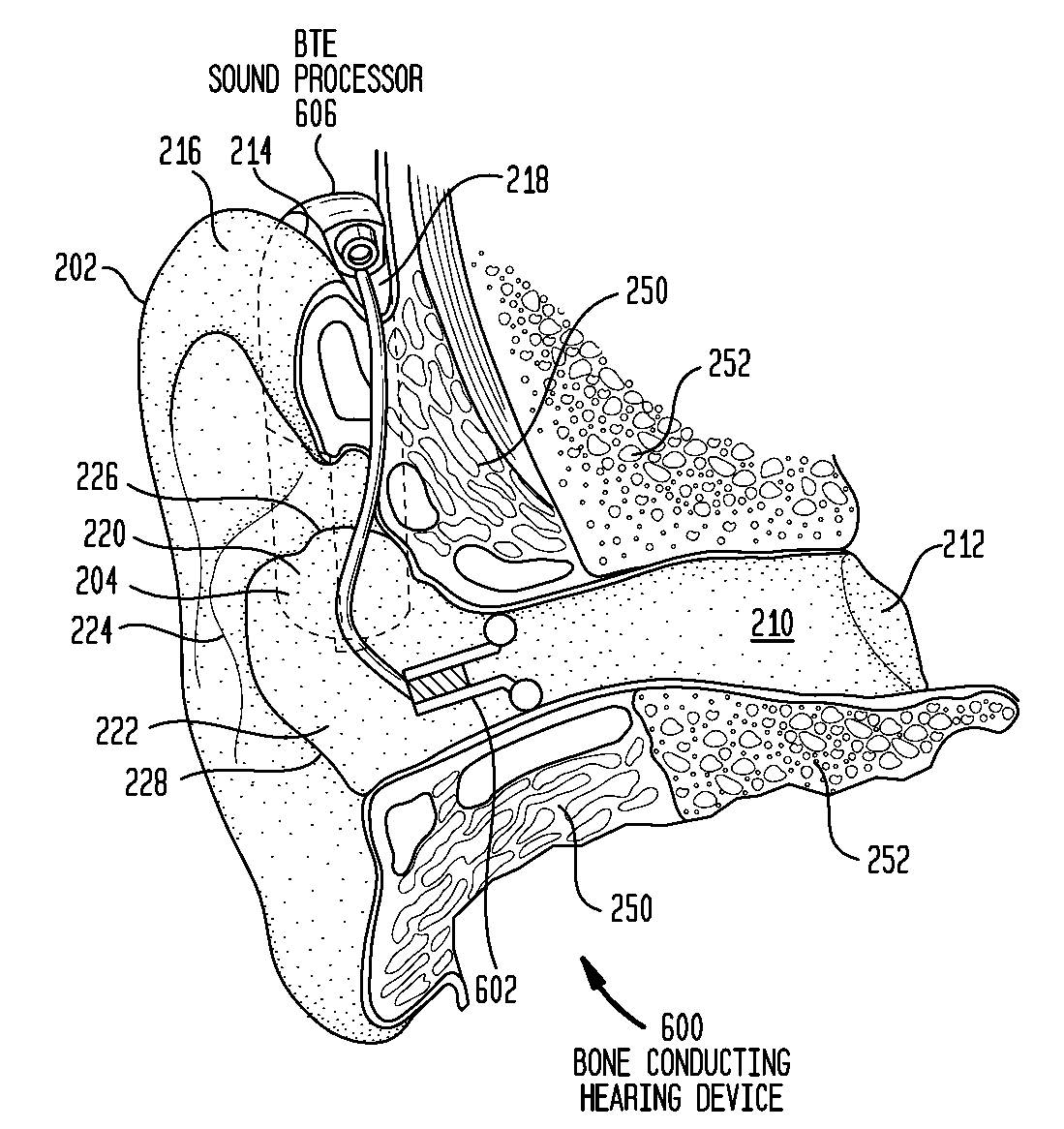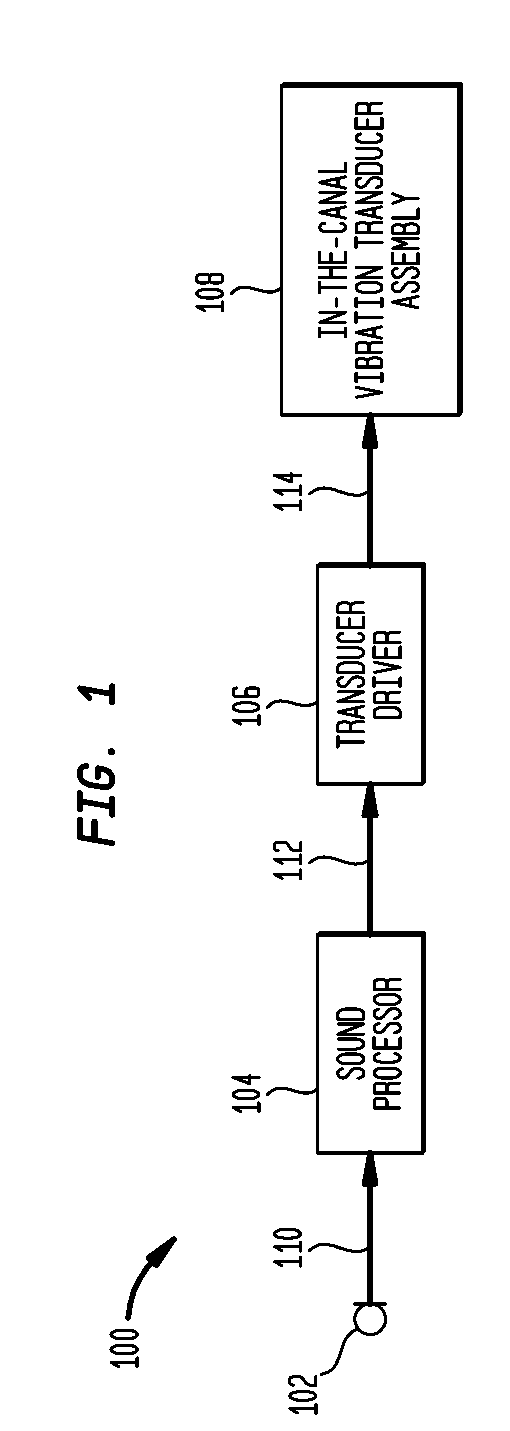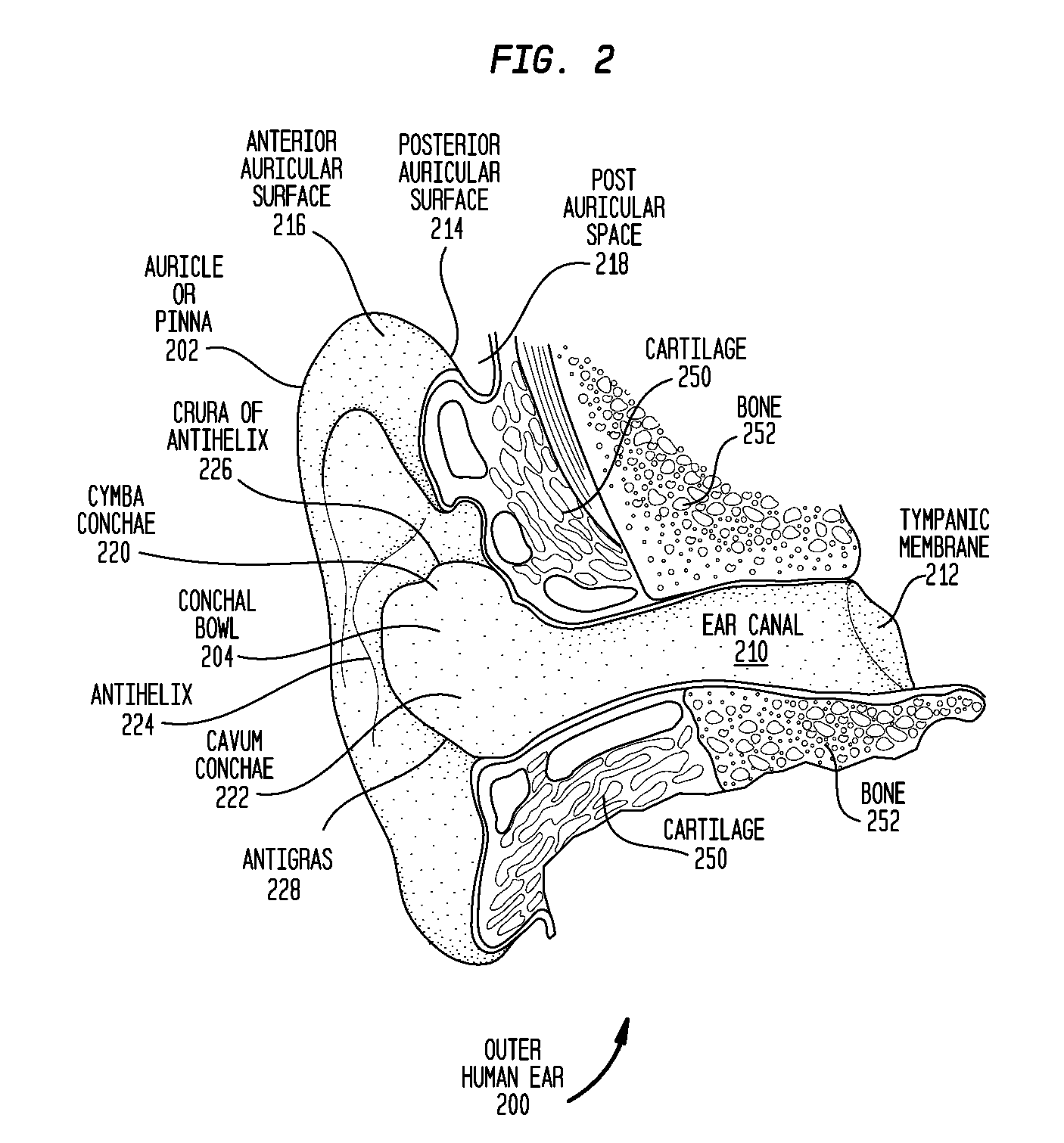Hearing device having one or more in-the-canal vibrating extensions
a hearing device and in-the-canal technology, applied in the field of hearing devices, can solve the problems of conductive hearing loss, unable to derive any benefit from conventional hearing aids, and impede the normal mechanical pathway for sound to reach the hair cells in the cochlea, so as to improve rehabilitate the hearing of the recipient, and enhance the hearing
- Summary
- Abstract
- Description
- Claims
- Application Information
AI Technical Summary
Benefits of technology
Problems solved by technology
Method used
Image
Examples
Embodiment Construction
[0030]Aspects of the present invention are generally directed to a self-retaining bone conduction hearing device having one or more in-the-canal vibrating extensions configured for non-surgical-implantation in a recipient's ear canal.
[0031]Unlike conventional hearing devices having an in-the-canal component, the hearing device of the present invention does not require surgical implantation of a bone conduction element such as a post or anchor. Furthermore, the device of the present invention does not interrupt the ossicular chain. In other words, the present invention does not interfere with the recipient's remaining natural hearing. Still further, in certain embodiments of the present invention, the external auditory canal is not occluded, thus permitting the normal biological functioning of the ear. For example, the present invention facilitates the normal egress of cerumen (ear wax) and the normal circulation of air and other fluids, thereby reducing the likelihood of external ea...
PUM
| Property | Measurement | Unit |
|---|---|---|
| surface area | aaaaa | aaaaa |
| electrical | aaaaa | aaaaa |
| mechanical forces | aaaaa | aaaaa |
Abstract
Description
Claims
Application Information
 Login to View More
Login to View More - R&D
- Intellectual Property
- Life Sciences
- Materials
- Tech Scout
- Unparalleled Data Quality
- Higher Quality Content
- 60% Fewer Hallucinations
Browse by: Latest US Patents, China's latest patents, Technical Efficacy Thesaurus, Application Domain, Technology Topic, Popular Technical Reports.
© 2025 PatSnap. All rights reserved.Legal|Privacy policy|Modern Slavery Act Transparency Statement|Sitemap|About US| Contact US: help@patsnap.com



